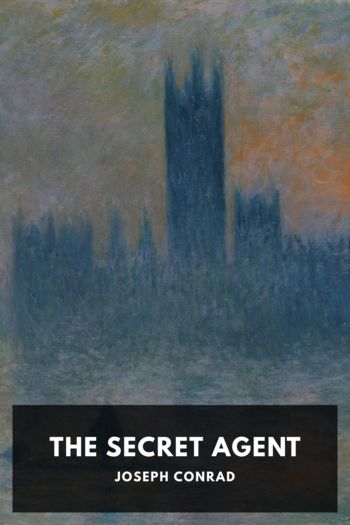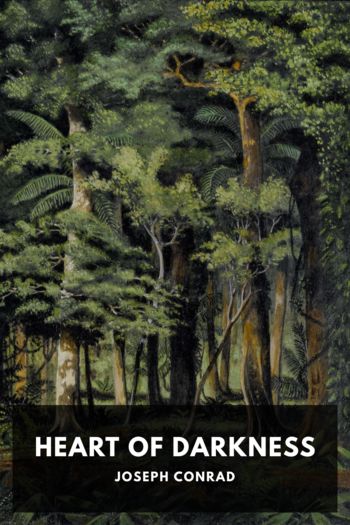Whoever Fears the Sea Justin Fox (books for 8th graders .txt) 📖

- Author: Justin Fox
Book online «Whoever Fears the Sea Justin Fox (books for 8th graders .txt) 📖». Author Justin Fox
Spicy aromas from the galley drifted across the deck, making everyone’s mouth water, even Paul’s, who wasn’t keen on shark. The flesh had been deboned and boiled in sea water. Now the doc was crumbling it into small pieces and adding onions over a charcoal fire. He tipped in chillies and tinned tomatoes, along with tamarind and crushed cardamom. When it was finally served on the windless, moonlit deck, Paul had to admit it tasted heavenly.
Supper done, he left the crew to make their beds in the waist and lowered himself over the side. The dhow had drifted close in and he could wade ashore with his borrowed sleeping bag held aloft. He found a comfortable spot on the beach, dried himself off with a T-shirt and crawled into the bag. There could hardly be a better place to spend the night, with a bed of soft coral sand and the ocean chafing the shore just metres from his feet. The cove was an enchanted disc of silver and black. Jamal lay in a patch of mercury moonlight. It was like the painting of a dream. Somalia, he thought, I’m sleeping on a beach in Somalia.
CHAPTER 24
‘Good morning, did you rest well?’ called Husni, striding up the beach towards him.
‘Better than ever,’ said Paul, sitting up on one elbow and rubbing the sleep from his eyes.
‘Breakfast?’ Husni handed him a Tupperware with papaya slices.
‘Thank you, delicious.’
‘Seeing as we are here, why don’t we go and find Rhapta?’
‘It’s here, on this island?’ said Paul, amazed. ‘Why didn’t you tell me?’
‘I thought it could be a little surprise.’ Husni had a wicked grin.
‘You bastard, let’s go find it!’ Paul said, getting out of his sleeping bag and pulling on a T-shirt and shorts.
Husni led him over a dune and through a coconut grove on the seaward side of the atoll. After twenty minutes they came to a promontory overlooking a cove. The area was dotted with baobabs, a few scattered doum palms and a stand of mango trees. They looked down on a picturesque beach with lime-green shallows, neatly contained by a line of coral. Beyond was the dark blue of the deep. On their right, the mainland stretched away to the southwest in one unending stripe of sand.
‘I think this is the spot,’ said Husni. ‘It was more than a decade ago … all these thorn bushes have grown up in the meantime … but look, can you see those low mounds? They’re actually the remains of buildings. Here —’ Husni pointed to a collapsed trench. ‘We dug these for Halász, the archaeologist. He hired a bunch of men from Kiwayu to come and help. We worked all the daylight hours.’
‘Why the rush?’
‘Halász was old, very sick. He knew he was dying and there was very little money. It was a hunch, a gamble. Sort of a dream for him. Like buried treasure.’
As they explored the site, Husni explained how the biggest job had been clearing the bushes — days of back-breaking labour. Then digging the trenches, three metres deep. At the deepest level, they found wonderful things. Glazed pottery, glass beads, an amphora: trade goods from both the Mediterranean and the Persian Gulf. ‘He was very happy about the money we found: three Roman coins.’
Paul understood why Halász was excited: imperial coins might suggest this was Rhapta. But if Paul was completely honest with himself, the site was too small to be a ‘metropolis’; the ruins weren’t grand enough. Most experts believed the city to be way further south, anyway. That big National Geographic Rhapta special might not be on the cards after all.
But it was certainly a very old settlement. Definitely pre-Swahili. The Romans and Greeks traded with a number of African ports, and this was probably one of them. After the fall of Rome and the collapse of that market, many towns along the coast would have died off, along with Rhapta.
‘There was broken pottery spread over the whole area,’ said Husni. ‘There would have been stone buildings in the centre, huts surrounding it — just like Lamu, or any Swahili town. And here, look at this.’ Husni pointed at a toppled pillar made of coral. ‘It’s part of a tomb. Halász was very interested in it.’
Paul and Husni sat on a fallen palm-trunk and shared a bottle of water. The pillar reminded him of the one he’d seen with Lorike at the Takwa ruins. Beside the column was a low mausoleum of sorts, adorned with panels of asymmetric, geometrical patterns. Pre-Islamic, but what were its origins? They had similar obelisk-like stelae in Axum in Ethiopia at that time — he’d seen photographs. Perhaps the Arabs had taken over this African tradition and turned it into an Islamic one.
Birds chirruped in the trees. The light reflecting off the sand was blinding. A stone-town surrounded by wattle-and-daub structures set on an island for security: the classic Swahili pattern. The sheltered anchorage would have been packed with the small sewn boats, forerunners of the mtepe, mentioned in the Periplus. Some would have been for fishing, others for coastal trading. He imagined larger, square-rigged vessels in the roadstead, a wondrous array of Roman, Greek, Egyptian, Arab and Persian craft.
There would have been a marketplace somewhere close to the beach. He saw tables, awnings, a pile of elephant tusks. In a cordoned-off section stood a group of near-naked slaves, tethered to one another, bound for Iraq to work on the reclamation of the southern marshlands. A trader had laid out two pale leopard skins and a handful of turtle shells in the shade of a baobab. On his lap he held a rhino horn, wrapped in blue cloth. It was sure to fetch a good price.
An Arab dhow had been warped into the shallows and its cargo of glass jars and bolts of cotton cloth was





Comments (0)